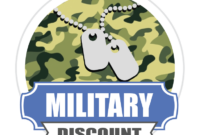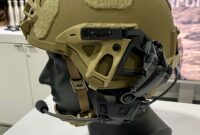Military Travel Site offers a comprehensive resource for military personnel, veterans, and their families navigating the complexities of travel. This site addresses the unique challenges inherent in military life, such as frequent relocations, deployment schedules, and the need for reliable, cost-effective travel options. We delve into the specific needs of this community, providing tools and information to simplify the planning and execution of both personal and official travel.
From finding suitable accommodations near military bases to securing travel insurance and utilizing exclusive military discounts, this resource aims to be a one-stop shop for all your military travel needs. We explore various aspects of creating a user-friendly website, including intuitive design, essential features, and strategic partnerships that cater specifically to the military community’s travel requirements. The goal is to create a secure and reliable platform that simplifies the travel experience for those who serve.
Monetization Strategies
Generating revenue for a military travel site requires a multi-faceted approach, balancing user experience with profitability. Several strategies can be employed, each with its own advantages and disadvantages. Careful consideration of the target audience and the site’s overall goals is crucial for selecting the most effective monetization plan.
Affiliate Marketing
Affiliate marketing involves partnering with travel-related businesses such as hotels, airlines, car rental companies, and tour operators. The site would earn a commission for each booking or sale generated through its affiliate links. For example, a link to a hotel booking site could earn a percentage of the booking price.
- Pros: Relatively low initial investment, passive income potential, aligns with site content, and enhances user experience by providing booking options.
- Cons: Commission rates can be low, reliance on external companies for payment, and requires consistent promotion of affiliate links.
Advertising
Display advertising, including banner ads and sponsored content, can generate revenue by charging advertisers for ad space on the site. Strategic placement of ads is key to avoiding disruption to the user experience. Different ad formats can be tested to optimize revenue.
- Pros: Potentially high revenue generation, relatively easy to implement with ad networks, and diverse advertising options.
- Cons: Can negatively impact user experience if not implemented carefully, reliance on ad networks for payment and traffic, and potential for low click-through rates.
Subscription Services
Offering premium content or features through a subscription model can provide a recurring revenue stream. This could include access to exclusive travel deals, detailed trip planning tools, or personalized travel itineraries tailored to military personnel’s needs. A tiered subscription model could offer different levels of access.
- Pros: Predictable revenue stream, fosters a loyal user base, and allows for the development of higher-value content.
- Cons: Requires significant upfront investment in content creation, marketing of the subscription, and potential for churn (users canceling subscriptions).
Implementation Plan: Affiliate Marketing Focus
This plan prioritizes affiliate marketing due to its relatively low barrier to entry and alignment with the site’s content. The initial phase will focus on partnering with established travel companies offering competitive commission rates. We will strategically integrate affiliate links within relevant content, ensuring a seamless user experience. Performance will be closely monitored using analytics tools to identify high-performing affiliates and optimize link placement. As the site grows, other monetization strategies, such as display advertising, will be introduced gradually to diversify revenue streams. A phased approach will allow for continuous improvement and adaptation based on user behavior and market trends.
Visual Design and Branding
Creating a compelling visual identity is crucial for a military travel site. The design needs to simultaneously project trustworthiness, professionalism, and an understanding of the unique needs and preferences of the target audience – military personnel and their families. The visual elements must convey a sense of adventure and relaxation, while also subtly reflecting the discipline and order associated with military life.
The visual design should inspire confidence and build a strong brand recognition amongst its users. This is achieved through a carefully curated selection of color palettes, fonts, and imagery.
Color Palette and Fonts
The color palette should be carefully chosen to evoke feelings of patriotism, reliability, and adventure. A primary color scheme might incorporate deep blues (representing stability and trust), muted greens (representing tranquility and nature), and touches of gold or bronze (representing achievement and prestige). These colors could be subtly accented with a darker, more grounded tone to provide visual balance and sophistication. Avoid overly bright or jarring colors that might appear unprofessional or detract from the overall message. The font choices should be clean, legible, and professional. A sans-serif font for headings would convey modernity and clarity, while a serif font for body text could offer a more traditional and authoritative feel. The fonts should be easily readable, even on smaller screens, ensuring accessibility for all users.
Logo Design
The logo should be a powerful visual representation of the site’s brand identity. A strong contender would be a stylized compass rose, subtly incorporating elements of military insignia. The compass rose symbolizes guidance and direction, essential for travel planning. Integrating a subtle element, such as a stylized star or eagle, could subtly nod to military themes without being overly aggressive. The compass rose could be rendered in a deep blue, with the additional element in a bronze or gold. The site’s name would be displayed in a clean, sans-serif font, directly below the compass rose. The overall design should be clean, uncluttered, and memorable.
Imagery
Effective imagery is critical to creating an emotional connection with the military community. Images should showcase diverse locations and activities, reflecting the broad range of travel experiences. For instance, a photograph of a family enjoying a beach vacation in a tropical location could convey relaxation and family bonding. Images of military personnel engaging in recreational activities, such as hiking or exploring historical sites, would resonate with their experiences and interests. Carefully selected images of national parks or historical landmarks could also appeal to a sense of national pride and adventure. All images should be high-quality, professionally shot, and well-lit, conveying a sense of professionalism and trustworthiness. Avoid images that are overly staged or clichéd. Authenticity is key. For example, instead of a generic image of a soldier saluting, show a soldier laughing with his family at a theme park, subtly highlighting the balance between duty and personal life.
Conclusion
Ultimately, a successful military travel site hinges on understanding and addressing the specific needs of its users. By prioritizing user experience, security, and relevant partnerships, this platform can become an invaluable tool for military personnel, veterans, and their families. The careful integration of effective marketing strategies, coupled with a commitment to data privacy and security, will ensure the site’s continued growth and relevance within the military community. The result will be a streamlined and supportive travel experience for those who have dedicated their lives to service.



